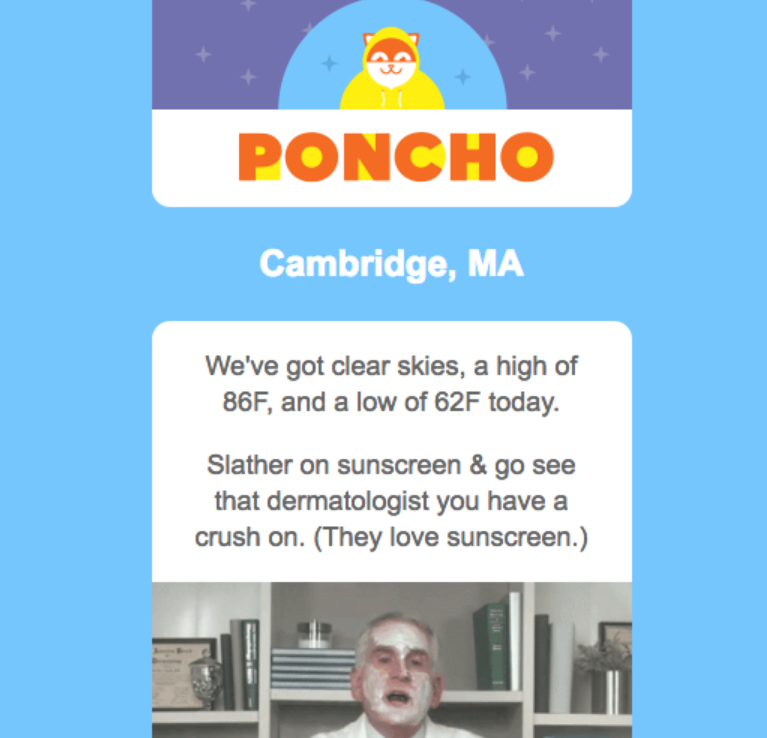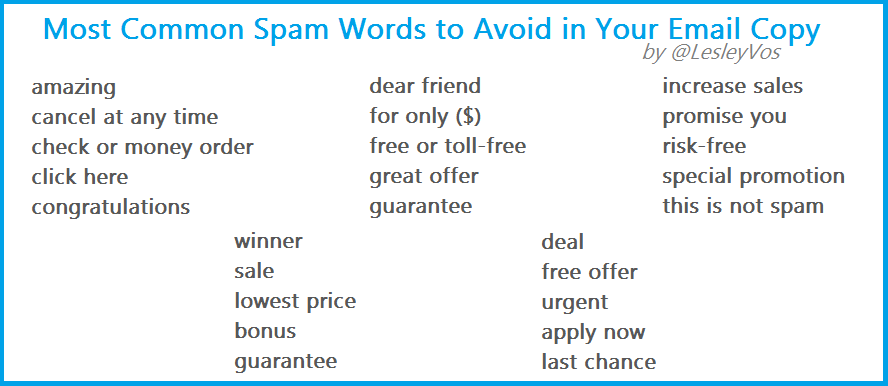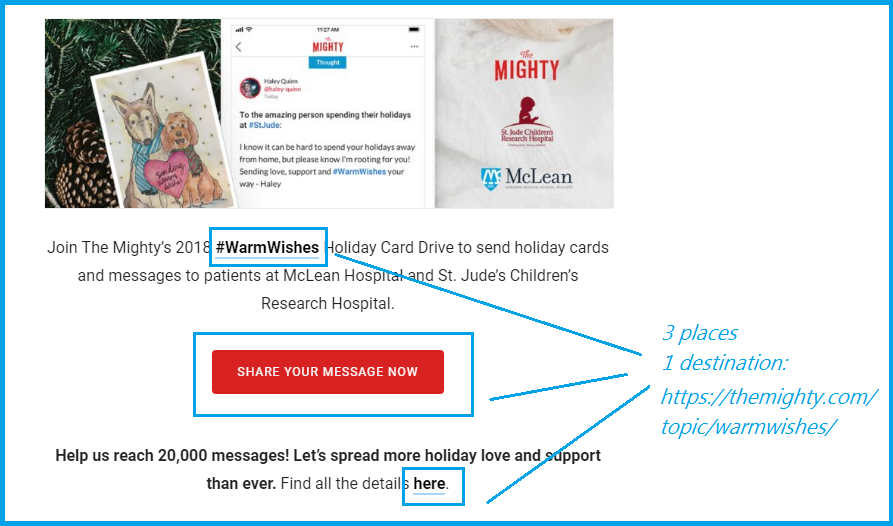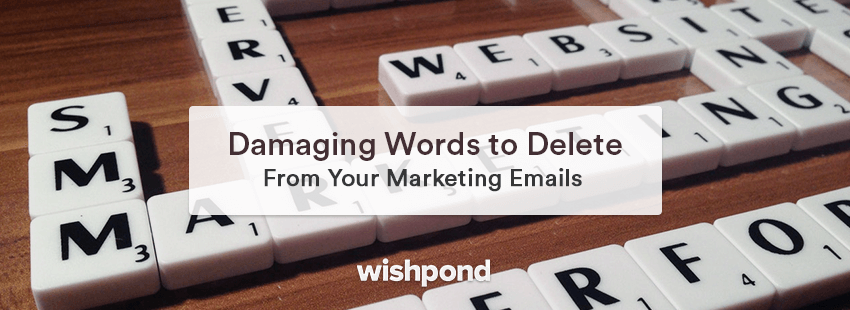As the years go by, our attention spans are getting even shorter.
Even more of us consider marketing emails a kind of ancient practice.
And while you spend time choosing high-converting email templates and optimizing them for your marketing campaign, the ugly truth of life comes out of a clear blue sky:
Most people don’t want to see marketing emails at all.
Not so inspiring, right?
But here comes the ray of hope:
72% of people still prefer communicating with brands via email. So your chances to grab target customers’ attention are still quite strong.
To succeed, do your best to follow email etiquette and moderate your words.
Otherwise, you risk failing spam filters and a drop in sales from email.
So what are these dangerous words? And why are they so bad?
Let’s get it straightened out…
1. Professional jargon (slang)
The #1 rule of email copywriting and marketing in general:
Speak the same language as your audience.
You’re not writing this email to show how cool you are and how many industry-related words you know. People don’t need that; they want to read emails they can understand.
You have three seconds to hook them, so stick to words everybody knows. Technical language and professional jargon are alien to average customers. Instead, focus on their pain points and tell how your brand or product can solve their problems and save their money and time.
Just take a look at this one from Poncho:

Simple. Brief. Clever. Easy to scan and understand what they want from you.
Talk about benefits instead of features: it will help you find words concentrating on customers rather than own awesomeness. Given that marketing emails need to be short, your every word counts here:
- Use the conversational tone.
- Appeal to emotions by using sensory words and analogies, as well as other literary techniques.
- Say “you” and “your,” not “we” and “our” to let readers know this email is about them.
- Use active verbs and power words to encourage them to take action.
- Avoid making false promises, forget about marketing buzzwords and cliches: readers aren’t stupid, and they are fed up with sleazy marketing tactics already.
2. Words that waste time
You know that strong subject lines and personalization help to boost open rates. But it’s not enough to make people open your marketing message.
You need to make them read it. And take your desired action after reading it. For that, take a closer look at words you use in email bodies…
…And make sure they aren’t plagued or wasting your readers’ time.
People don’t really read content today. Instead, they scan it– spending 15-20 seconds on a message. So if your marketing email is too long and full of wateriness, strong chances are they’ll ignore it.
Check if your email has any of these words. Delete if you find any:

They make your message look generic in the eyes of readers. So they will miss its point, scan it quickly, and forget about it.
3. Superlatives
This one stems from #2:
People don’t believe superlatives. They bring nothing but generalization to your email copy.
They believe specifics.
Saying that your brand is “innovative,” “revolutionary,” “amazing,” or “the best” will not get your marketing campaign far. Let it speak for itself; show, don’t tell it’s the best one.
In sales writing, superlatives are among the worst words to use.
Translate them into specifics so the readers could see why you’re the best. People aren’t idiots, and they won’t believe you’re innovative and revolutionary just because you say so.

No: “Cheapest templates for your landing page.”
Yes: “Choose a template for your landing page for $1.99.”
No: “We have the best Italian food in the city.”
Yes: “Our cafe has won 5 Golden Spoon awards.”
No: “Fastest delivery in Chicago.”
Yes: “We deliver your Chicago pizza in 15 minutes.”
4. Spam words
You know that email is the most profitable marketing channel, with an ROI of 4400%.
You know that its open rate is 25% on average, making emails 12 times more visible than Facebook messages.
But…
You also know that all this leads to unbelievable pizzazz of spammers, making your emails vulnerable to filters. Long story short, wrong words in your subject lines or email bodies make your message vulnerable to jumping into spam.
Filters are rigorous, triggered by certain words, burying your marketing emails in users’ inboxes. Spam words are many, and it’s close to impossible to remember and avoid all in emails; and yet, you can do your best and cross out those most widely used:

Are you still worried that your emails might go to spam? If you follow all of the above tips, and you are still having a problem with emails getting sent to spam, here are some spam checkers that you can use to test your emails for issues.
To make sure everything is fine, use checkers to test the content for issues.
Spam checkers are many, and you know some by all means: Litmus, IsNotSpam, EmailReach and others, they all are designed to optimize marketing emails and help you keep emails out of spam.
5. Multiple CTAs
Far back in 2014, Neil Patel compared us all with kids in a candy store:
“When you take a kid to a candy store, what happens? They don’t know what to buy, right? The reason is that they have too many options to choose from and they are not sure which one is the best choice.”
The same goes for your marketing emails with several CTA buttons. Giving users too many options or asking for too much information can reduce your conversion drastically.
Decrease the number of your CTAs from four to one — and the CTR of your email could grow by 42%!
For that, choose the desired action you need right now, and limit your email to that one. It’s fine to link to it in 2-3 different places of the email, but that link should lead a reader to one destination.
Case in point from The Mighty:

You can give it even more power if using buttons instead of hyperlinked texts. The natural reaction to a button is clicking, so it becomes a one-way out for recipients. It’s a visual clue that shows people what to do next.
Yet, a button itself can’t do wonders.
Words you use for CTAs can.
And here’s where we go back to the “be specific” tip: make your CTA clear for users.
“What’s next,” “click here,” or “learn more” aren’t as obvious as they seem on the surface, while “order now” or “start your trial” are. So use only proven call-to-action words to maximize conversions.
Bonus:
Say no to overuse of exclamation points in your marketing emails.
There’s nothing wrong with them, as well as there’s nothing wrong with your enthusiasm about the message. And yet, when overused, exclamation points do more harm than good.
First, they give an impression you shout at readers. “Read this article!!!” doesn’t seem a friendly subject line, huh?
Second, they give an impression you are anxious, or emotionally unstable.
And third, people don’t trust the positive enthusiasm of exclamation points anymore. In other words, they won’t consider “Hello, John!” friendlier than “Hello, John.”
But it doesn’t mean you can’t use exclamation points in emails. Just keep it to one or two per message, depending on its context.
Final Thoughts
In 2019, email gets even more power: compared to social media posts and Google ads, it remains the most convertible channel for marketers.
To get the most out of it, pay attention to the anatomy of your email. Structure and format it the rules of web writing, consider the secrets of email copywriting, and moderate your words to make it easier to read than ignore.
For that:
- Speak the same language with your audience. Stick to words everybody knows, make your email short but informative.
- Be specific: avoid superlatives and generic words that bring no value to a reader.
Beware spam words. - Make your CTA as clear as possible. Avoid multiple calls to action if you want to increase conversions from email marketing.
- Choose sensory, power words to trigger the emotional response from recipients and encourage them to take action after reading your email.
Don’t sell but help. Show the audience what’s in your brand beyond marketing.
About the author: Lesley J. Vos

With 7+ years in marketing, Lesley specializes in sales copywriting and storytelling. Currently associating with Bid 4 Papers, she’s also a regular contributor to many publications on business, marketing, and self-growth. Feel free to find more works of Lesley on Twitter.

